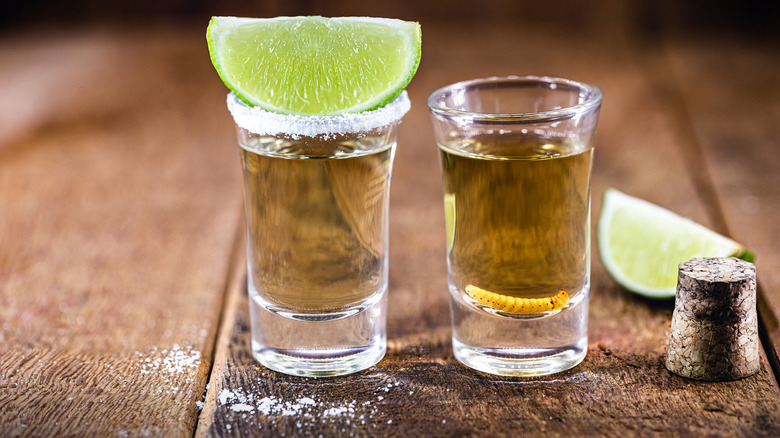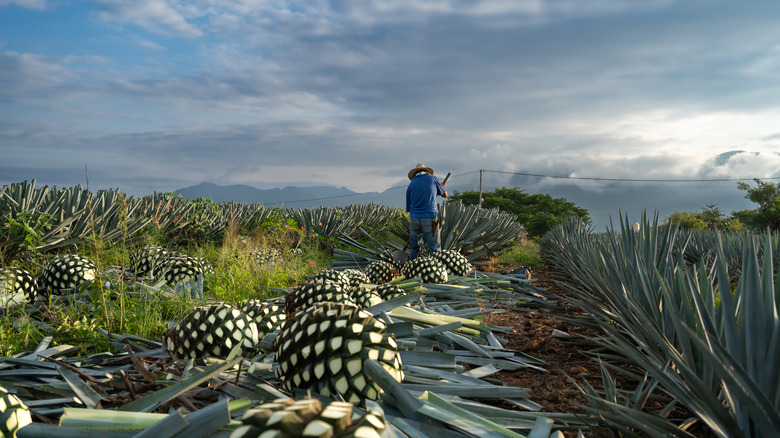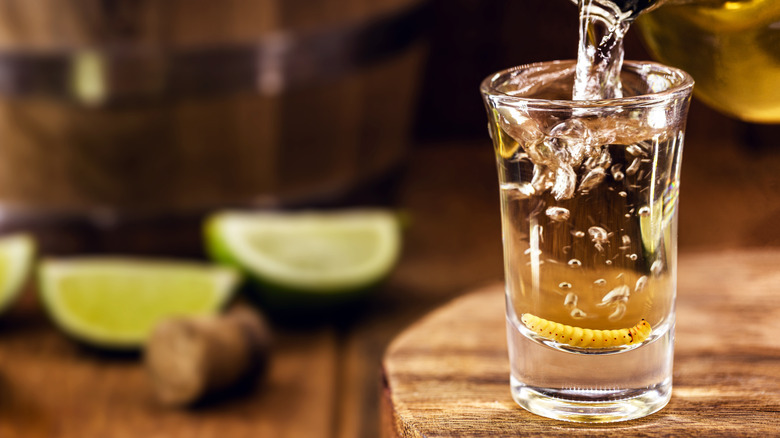Tequila Worms Aren't Actually Worms, And They Don't Belong In Tequila
Over the years, the infamous tequila worm has taken on mythic proportions, finding its way into Hollywood films like "Poltergeist II" and giving rise to urban legends about its alleged hallucinogenic effects. But as it turns out, the creature floating in that bottle of mezcal is not actually a worm, and you'll never find one in a bottle of tequila. For the first misnomer, a 2023 scientific study from the University of Florida in the journal PeerJ discovered the truth. The tequila worm is actually the caterpillar, or larval stage, of the agave redworm moth.
To get to the bottom of the second issue with calling these larvae tequila worms, we first need to understand the difference between tequila and mezcal. At the end of the day, it can be summed up like this: All tequilas are mezcals, but not all mezcals are tequilas. Since the agave redworm moth caterpillar is only found in bottles of mezcal — and is in fact banned from being added to tequila — calling it a tequila worm is simply incorrect.
Tequila versus mezcal
Both tequila and mezcal are traditional Mexican distilled spirits made from agave plants. While mezcal can be crafted from at least 20 different types of agave, including wild varieties, tequila must be made from 51% Blue Weber agave sugars. Blue Weber agave must be produced in the Mexican state of Jalisco or one of four other nearby Mexican states.
Tequila and mezcal have distinctive flavor differences as well, with mezcal's most prominent quality being a smokiness imparted by the traditional roasting of the agave plant's heart, called a piña, as part of the spirit's creation. Mezcal production thrived in Mexico beginning in the 17th century, but Mexico's indigenous people had been making a drink called pulque from fermented agave nectar for thousands of years. The addition of tequila worms in mezcal, on the other hand, is a relatively new phenomenon, and may have been mostly a marketing gimmick. And boy did it work.
When a worm is not a worm
According to the University of Florida study, the original man behind the "worm" (or, to be accurate, larva), was likely Jacobo Lozano Paez, a mezcal master who believed the creature enhanced the color and flavor of the beverage. He began adding the creatures to mezcal sometime in the 1940s or 1950s. This isn't as strange as it seems. In Mexican cuisine, agave redworm moth larvae are considered by some to be a delicacy and are sometimes ground up with various chiles and sea salt. The resulting red-colored condiment is called sal de gusano and is often consumed with a shot of mezcal.
As mezcal becomes more and more popular, the iconic addition is less commonplace, since many makers believe it lowers the quality of the product. If you're looking to dip your toe into the mezcal scene, Chef Gordon Ramsay's go-to margarita recipe calls for mezcal instead of tequila. Ramsay believes mezcal gives the drink a more complex flavor profile. The recipe makes no mention of the "worm."


